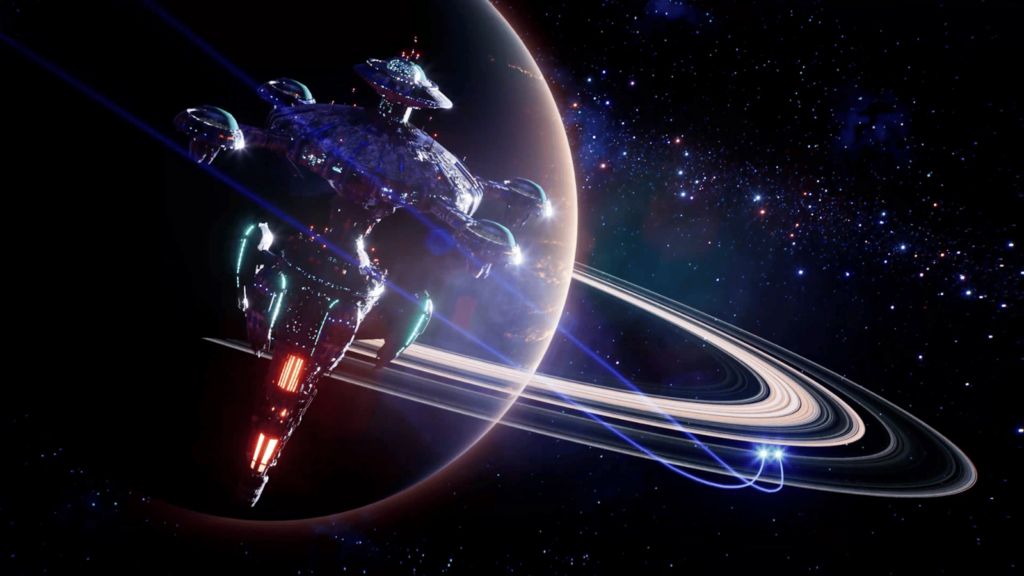The System Shock remake is an example of both the good and bad that can come with improving a classic. While it gives developers an opportunity to enhance what worked, sometimes they stray too close to the original, warts and all.
-
Story
-
Gameplay
-
Replayability
-
Visuals
-
Performance
If there was any game that deserved a complete remake, it’s System Shock. The original 1994 game was groundbreaking on so many levels, it’s considered by many to be the birthplace of an entire genre. Sure, Ultima Underworld: The Stygian Abyss is hailed as the first ‘immersive sim’ – a genre of game that allows for multiple approaches and encourages player choice within a tightly-controlled, systemic environment – but System Shock perfected it.
A difficult game to parse, even with the help of the overhauled Enhanced Edition, Nightdive Studios’ efforts to rebuild this classic with a new engine and mechanics more in line with what audiences expect nowadays is commendable, but sometimes it’s better to iterate rather than reiterate.
What’s going on?

From there, the rest of the story is delivered through audio logs and text messages, fleshing out the inhabitants of Citadel Station in the aftermath of SHODAN’s rampage. While the plot itself is effectively an excuse for the player to run around and flip switches, the driving force behind it is its villain.
Nightdive Studios knows SHODAN is the star of System Shock and went to great lengths to elevate her presentation. Rerecording returning voice actor Terri Brosius and infusing her delivery with glitches and stutters make what could be a generic “robot-gone-bad” villain into something genuinely scary.
There’s a malevolence to SHODAN’s voice, not a disregard for humanity but a genuine hatred that’s convincing. The AI isn’t just a single computer on Citadel Station, SHODAN is Citadel Station. She’s all-encompassing, an omnipotent entity constantly watching through security cameras and commenting on your progress. It’s easily the best part of System Shock, although special mention should be made to the rest of the voice cast for significantly improving the audio logs; the voice acting in the original System Shock by comparison is… well, it’s not good, to be blunt.
Return to the 90s
As for the gameplay, this is where the remake both shines and falters to some extent. System Shock had a menu problem, requiring players to slog through different windows and screens to just navigate the world and blast brainless cyborgs and robots. The remake does away with most of that, adopting combat that’s more in line with something like Bioshock, a game which many consider to be the original’s spiritual successor.
Don’t get lost
On the topic of aspects that feel half-baked, the most frustrating part of System Shock is its environment. The maps for each level of Citadel Station are sprawling which could have been fun to explore if they didn’t all feel like labyrinths. It’s intentionally designed this way, so says a text log in the game, to facilitate fear and confusion. More often than not, it leaves one feeling bored and lost, running through the same corridor over and over because the lack of distinct visual cues and landmarks makes it painful to smoothly navigate anywhere.
We would also be remiss to not mention some of the technical issues we encountered. While the game was generally stable, we stumbled upon several major glitches with the quick-save, quick-load feature, an essential part of any immersive sim. On three separate occasions, quick-loading dumped us either outside of the game environment or within a wall, rendering it impossible to move. The only way to fix this was loading an entirely different save, often losing large chunks of progress. We can only hope this major issue will be addressed with a patch, either before or on launch day — 30 May.
System Shock verdict
The System Shock remake is an example of both the good and bad that can come with improving a classic. While it gives developers an opportunity to enhance what worked, sometimes they stray too close to the original, warts and all.
System Shock can be a fun experience for those who fondly remember the 1994 game but the chaotic level design and obscure objectives may make it difficult for new players unfamiliar with the franchise. There is fun to be had in this remake, but only if you’re willing to accept some big caveats.